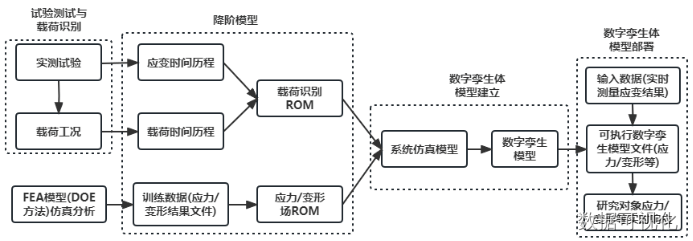The following cases are from the "Digital Twin World White Paper (2023 Edition)"
How to get it: Public account **“EasyV Digital Twin”** and you can get it by replying to the “White Paper” in the background!
The simulation technology of the digital model is the core technology for creating and running the digital twin and ensuring the effective closed-loop between the digital twin and the corresponding physical entity. Simulation is a technique to simulate the physical world by transforming a model containing deterministic laws and complete mechanisms into software. As long as the model is correct and has complete input information and environmental data, it can basically reflect the characteristics and parameters of the physical world correctly. Simulation technology not only establishes digital models of physical objects, but also calculates, analyzes and predicts the future state of physical objects through physical laws and mechanisms according to the current state. This kind of simulation is not a simulation of a stage or a phenomenon, but a full-cycle and full-field dynamic simulation.
Emerging in the industrial field, simulation mainly refers to the use of numerical methods to solve mathematical equations describing physical problems by computer to simulate solid motion, structural deformation, motion of gas and liquid, heat exchange, momentum transfer, pressure change, chemical reaction, electromagnetic Phenomena, energy conversion and other phenomena help engineers understand physical processes and predict changes in physical quantities.
1. General technical route for simulation model construction
The general technical method for building a real-time digital twin model of equipment is mainly divided into five stages:

The first stage of experimental testing and load identification: select the core components from the mechanical equipment, analyze the optimal placement of the strain gauge, and combine the actual engineering experience to determine the optimal placement of the parts. Then carry out the equipment strain measurement test, and record the strain data of all strain gauges on the equipment under the test conditions. Finally, using the strain data, the load time history experienced by the equipment components is reversed based on the displacement frequency response function in system dynamics.
The second stage of training data generation: In order to generate the component stress/deformation field ROM (Reduce Order Modeling), firstly, in a set of value spaces composed of all possible working condition loads of mechanical equipment, the Latin hypercube method is used to sample the load conditions , to obtain loading schemes for multiple load cases, then perform finite element simulation calculations, and extract the calculation result files.
The third stage reduced-order model generation: using the strain data tested in the first stage and the calculated load time history, according to the response surface fitting method, the load identification ROM is constructed. In addition, the stress/deformation field ROM is constructed based on the SVD+response surface fitting method using the finite element calculation result data of multiple sets of loading schemes generated in the second stage.
The fourth stage of digital twin model establishment: connect the load identification ROM and stress/deformation field ROM generated in the third stage, and establish the system simulation model as shown in the figure below. The system model can be calculated in real time based on the strain data of the strain gauges attached to the equipment parts to obtain data such as the load time history of the parts, the stress/deformation results of the parts, and cloud images. On the basis of the system simulation model, the digital twin model of equipment parts is packaged, and the generated digital twin model is compiled and exported.

The fifth stage of digital twin model deployment: further processing the digital twin model in the fourth stage, and building input and output ports for it to connect with the outside world, so that the digital twin model can be separated from the simulation operating environment and deployed to the cloud, microcomputer, Terminal applications such as offline devices. The digital twin model can calculate the strain data collected by the equipment in real time, and obtain its stress/deformation data, cloud image and other results in real time.
The above cases are from the "Digital Twin World White Paper (2023 Edition)"
How to receive: **Public account "EasyV Digital Twin"** Reply to the "White Paper" in the background to receive!
Follow [Official WeChat Public Account] to view more visual information ~ waiting for you
EasyV digital twin
Easy to know the micro digital twin world
Digital twin visual communication group:

During the free trial period: operation, product, design, and technical personnel provide professional one-on-one guidance and answer questions.